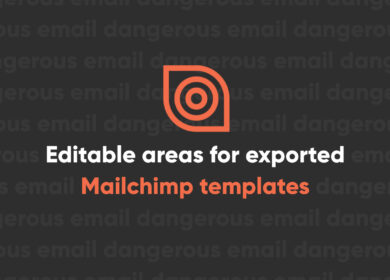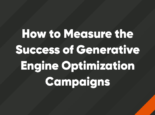
Is the Blogosphere Dying? Here’s What You Need to Know for 2025 and Beyond.
Alright, let’s get one thing straight right away — blogs aren’t dying. In fact, they’re more alive than ever!
Sure, we’ve seen the rise of short-form content, AI-powered tools, and platforms like TikTok and Pinterest that value media-focused content take the spotlight. But here's the truth: blogs have not and will not be going anywhere anytime soon.
Hold up — before you grab your phone and start Googling “Is blogging dead?” let's dive into why blogs are still very much in the game and will always have a special place in the content world. So grab a cup of your favorite brew, get comfy, and let’s talk about why blog content will continue to hold its ground in 2025 and beyond.
Long-form vs. short-form content
Let’s be real, we’re living in a world where attention spans are shorter than ever. With TikTok, Instagram, and Twitter (or should we say X?) dishing out snackable content like it’s candy at a parade, it feels like we’re all in a race to capture attention in mere seconds. But here’s the catch: short-form content, while super fun and engaging, doesn’t allow for the kind of deep connection or insight that a long blog post does.
While short-form content is fantastic for sparking interest and keeping people engaged for a few moments, it has its limits. It’s designed to give you just enough to leave you wanting more but doesn’t offer the in-depth exploration that long-form content provides. This is where long-form content steps in—offering a completely different set of advantages.
When you craft a longer piece of content, like a well-thought-out blog post, you have the opportunity to go deeper into a subject, offering your audience more than just surface-level information. Long-form content gives you the freedom to dig into a topic from multiple angles, offering detailed insights, thoughtful analysis, and real value that can leave a lasting impact on your audience. This kind of content can turn a casual interest into a deeper understanding or even a lasting relationship with your audience. It creates space to establish authority, build trust, and offer comprehensive knowledge that short-form simply can’t deliver.
Take, for example, a topic like swimming pools. A short-form piece of content might focus on something like "5 Pool Maintenance Tips" or "The Best Pool Design Ideas for 2025"—quick, digestible content that gets the point across in a few seconds. But when you shift to long-form content, you open up an entirely different world of possibilities. You could explore the topic in depth: the benefits of different pool materials, how to choose the right pool for your yard size, seasonal maintenance tasks, pool safety tips, and even the environmental impact of pool ownership. By delving into these various facets, long-form content provides your audience with a much richer, more nuanced understanding of the topic.
How long-form content boosts SEO
Beyond offering more value to your audience, long-form content is also advantageous for search engine optimization (SEO). The more comprehensive and detailed your content, the more likely it is to rank higher in search engine results. Google loves long-form content because it signals to the search engine that your page is authoritative and thorough on the topic at hand. When you take the time to dig deep, you naturally end up using more relevant keywords and phrases, which helps search engines understand what your content is all about.
Long-form articles tend to attract more backlinks, too. Since these pieces offer value and more in-depth information, other websites and blogs are more likely to reference and link to them. Backlinks are a major factor in SEO ranking, and having multiple high-quality links pointing to your content can significantly improve its search visibility.
Moreover, longer content increases the chances of capturing various long-tail keyword searches—specific phrases or questions people are searching for that may not be as common but are still highly relevant to your niche. With short-form content, it’s harder to naturally include the variety of keywords that may draw users from different search angles. Long-form content, on the other hand, can provide ample space to cover all those related search terms, increasing your chances of ranking for a wider range of queries.
Let’s take the swimming pool example again. A well-researched, detailed blog post could cover topics like “How to Choose the Best Pool for Small Backyards” or “How Much Does It Cost to Build a Pool?” These specific, long-tail keywords are often what search engine users are looking for, and a comprehensive, long-form blog is more likely to rank for them than a brief, general post.
Enter AI-powered search engines
It’s important to consider how AI tools are impacting the search engine results pages (SERPs). New AI-powered features like AI Overviews are taking a lot of real estate in the SERPs, resulting in blog content and other organic results getting pushed further down on the page.
Should that dissuade you from blogging? No! The results generated by AI are compiled from website content across the internet. And the AI cites its sources, meaning that if your blog content gets used in a query response, your website will still have an opportunity to show up. And for the most complex queries, AI Overviews and other AI tools have a harder time giving a succinct answer, so the user will want to click to a website to dive deeper.
While definitely not the same opportunity we used to have for ranking high in search results, it’s an opportunity nonetheless, and one you should work to take advantage of. If you’re publishing high-quality content that answers in-depth questions and appeals to both your target audience and search engines, your content should be rewarded. Even though the SERPs look different these days, the fundamentals remain the same.
Short-form meets long-form for SEO success
Let’s set the record straight—there’s no need to pick a side when it comes to short-form versus long-form content. They each have their own power and work best when teamed up together. Short-form content is like that eye-catching appetizer at a party—it grabs attention in a snap, sparks curiosity, and whets your appetite for more.
Long-form content, however, is where all the magic happens for deeper, more genuine connections. It takes that initial curiosity and transforms it into valuable, detailed insights that not only build trust but also improve your SEO. It provides a full meal rather than just a starter course.
In a world where we’re all swimming in content, combining both short- and long-form is like having the best of both worlds. You get the instant hook of short-form and the lasting engagement of long-form, giving your audience a complete experience that keeps them coming back for more, all while boosting your reach and impact at the same time.
So, instead of seeing short-form and long-form content as opposing forces, consider how they can support each other. They’re both essential pieces of a well-rounded content strategy, and when used together, they can create a richer, more engaging experience for your audience while helping you climb the ranks of search engine results.
AI: the rise of robots
Now, let’s talk about a shiny toy in the marketing world: AI. Yep, we’re all hearing about how AI, or Artificial Intelligence, can write blog posts, generate ideas, and even help with SEO.
But let’s pump the brakes a second. AI is a tool, not a replacement.
Sure, AI tools can help out a lot with content creation: from streamlining research to automating some of the more tedious aspects of writing to giving you a jump-start when you're stuck in writer's block, it can be invaluable during the writing process. But here’s the thing: it can’t replicate the humanity behind a blog post. The personality, the quirky voice, the experiences, and the emotions that turn a blog from “just another article” into something that resonates with your readers? That’s all you, my friend.
AI might be able to spit out content, but it’s not capable of forming the same deep, authentic connections that real humans can through well-crafted, thoughtful long-form content. People want to hear YOUR voice. They want to connect with YOU. And that’s something AI just can’t and will never be able to replace.
And while AI is going to continue improving, it still won’t ever have the human experiences that make long-form content truly unique and valuable. Humans want to learn from other human experiences, first-hand accounts, and stories. And for that type of content, real human interference will always be necessary.
So, don’t sweat it! AI is here to help, not to take over your blog. If anything, it’s the perfect sidekick to help you streamline your writing processes.
Why long-form content will always have a seat at the table
Bottom line, long-form content is not going anywhere. Sure, the way we consume content might change. We might see more interactive elements, more multimedia, or even more bite-sized chunks embedded in the middle of your post to make it more engaging. But at its core, long-form content is the best way to create genuine relationships, establish trust, and offer in-depth knowledge.
Short-form content is like a quick snack — delicious and satisfying in the moment — but long-form content? It’s the full meal, giving your audience something to really sink their teeth into and savor. And that’s why blogs will always have a place in this world: they’re made for nurturing relationships, offering valuable insights, and leaving an impression that sticks.
What does all of this mean for blogging?
So, what’s the takeaway from all of this? It’s simple: blogs aren’t dying — they’re evolving. The rise of short-form content is exciting, AI is making waves in the content world, and new platforms are emerging all the time. But none of that diminishes the power of long-form content.
If anything, it’s a chance to rethink how we blog, and adapt in ways that keep us connected to our audience. It’s time to get creative, integrate new formats, explore interactive ways to engage readers, and find new angles to share your expertise. The best part? You get to stay authentic while doing it.
Blogging in 2025: tips for a stronger blog
It’s quite an exciting time for content creators, but with so much noise out there, how do you cut through it all? Don’t worry, we've got you covered! Here are 2025 blog best practices that will help your posts stand out more than ever:
- Include visuals (but don't overdo it!): Say goodbye to the days of long, text-heavy blogs that only the most determined reader will get through. In 2025, it’s all about making your posts engaging and visually dynamic. Think high-quality images, infographics, and even embedded videos. But here’s the catch—don’t drown your readers in media. Keep it balanced and purposeful to enhance the experience, not distract from it.
- Prioritize user experience (UX): This one’s huge. If your blog isn’t mobile-friendly or it takes forever to load, people will bounce faster than you can say “SEO.” Fast, snappy design that’s easy to navigate is crucial in 2025. Make sure your content looks great across all devices and is structured with clear headings, bullet points, and short, digestible paragraphs. Nobody wants to read a boring wall of text!
- Search intent is everything: The days of cramming keywords into a blog post are over. Focus on providing value. If your blog is crafted with a deep understanding of what your audience is looking for, you'll naturally rank higher. Think about the pain points, needs, and questions your readers have. And then, boom — give them exactly what they want.
- Write like you're talking to a friend: Readers in 2025 crave authenticity, relatability, and a bit of personality. Write like you’re having a conversation with your bestie. People want to connect with your voice, so don’t be afraid to let a little humor, enthusiasm, and casual charm slip in (as long as it’s still professional and appropriate for your audience, of course!).
- Consistency > perfection Blogging in 2025 is all about showing up consistently. Whether you’re posting once a week or once a month, be consistent with your schedule and content quality. And hey, don’t stress about perfection. The more you write, the better you’ll get. Perfection is a moving target, but consistency builds your brand!
Let’s recap!
No, blogs aren’t dead. Far from it. In fact, they’re just getting started — evolving, adapting, and still holding their place as one of the best ways to create authentic connections in the ever-changing content landscape. If you’re thinking of throwing in the towel or jumping ship for the latest trend, don’t do it! Embrace the future of blogging.
Adapt, get creative, and make your blog a space that continues to connect, educate, and entertain.
Need help bringing your blog to life and ensuring it resonates with your audience?
Let us help you bring your brand to life with Perrill’s content marketing services. We’re all about creating high-quality, engaging content that connects with your audience and delivers real results. Whether it’s a blog, website copy, social media posts, or anything in between, we’ll work with you to craft materials that truly reflect your brand and drive growth. Ready to get started? Reach out today!





